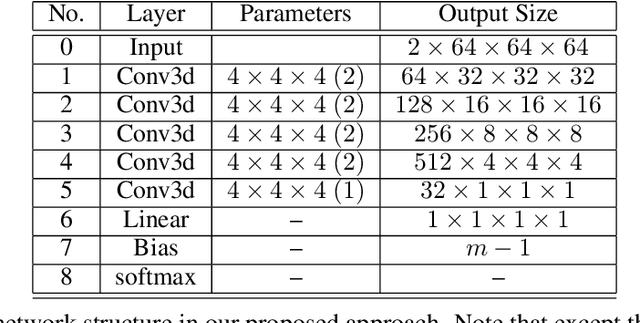Vidya Koesmahargyo
Prediction of clinical tremor severity using Rank Consistent Ordinal Regression
May 03, 2021



Abstract:Tremor is a key diagnostic feature of Parkinson's Disease (PD), Essential Tremor (ET), and other central nervous system (CNS) disorders. Clinicians or trained raters assess tremor severity with TETRAS scores by observing patients. Lacking quantitative measures, inter- or intra- observer variabilities are almost inevitable as the distinction between adjacent tremor scores is subtle. Moreover, clinician assessments also require patient visits, which limits the frequency of disease progress evaluation. Therefore it is beneficial to develop an automated assessment that can be performed remotely and repeatably at patients' convenience for continuous monitoring. In this work, we proposed to train a deep neural network (DNN) with rank-consistent ordinal regression using 276 clinical videos from 36 essential tremor patients. The videos are coupled with clinician assessed TETRAS scores, which are used as ground truth labels to train the DNN. To tackle the challenge of limited training data, optical flows are used to eliminate irrelevant background and statistic objects from RGB frames. In addition to optical flows, transfer learning is also applied to leverage pre-trained network weights from a related task of tremor frequency estimate. The approach was evaluated by splitting the clinical videos into training (67%) and testing sets (0.33%). The mean absolute error on TETRAS score of the testing results is 0.45, indicating that most of the errors were from the mismatch of adjacent labels, which is expected and acceptable. The model predications also agree well with clinical ratings. This model is further applied to smart phone videos collected from a PD patient who has an implanted device to turn "On" or "Off" tremor. The model outputs were consistent with the patient tremor states. The results demonstrate that our trained model can be used as a means to assess and track tremor severity.
Direct Classification of Emotional Intensity
Nov 15, 2020



Abstract:In this paper, we present a model that can directly predict emotion intensity score from video inputs, instead of deriving from action units. Using a 3d DNN incorporated with dynamic emotion information, we train a model using videos of different people smiling that outputs an intensity score from 0-10. Each video is labeled framewise using a normalized action-unit based intensity score. Our model then employs an adaptive learning technique to improve performance when dealing with new subjects. Compared to other models, our model excels in generalization between different people as well as provides a new framework to directly classify emotional intensity.
 Add to Chrome
Add to Chrome Add to Firefox
Add to Firefox Add to Edge
Add to Edge